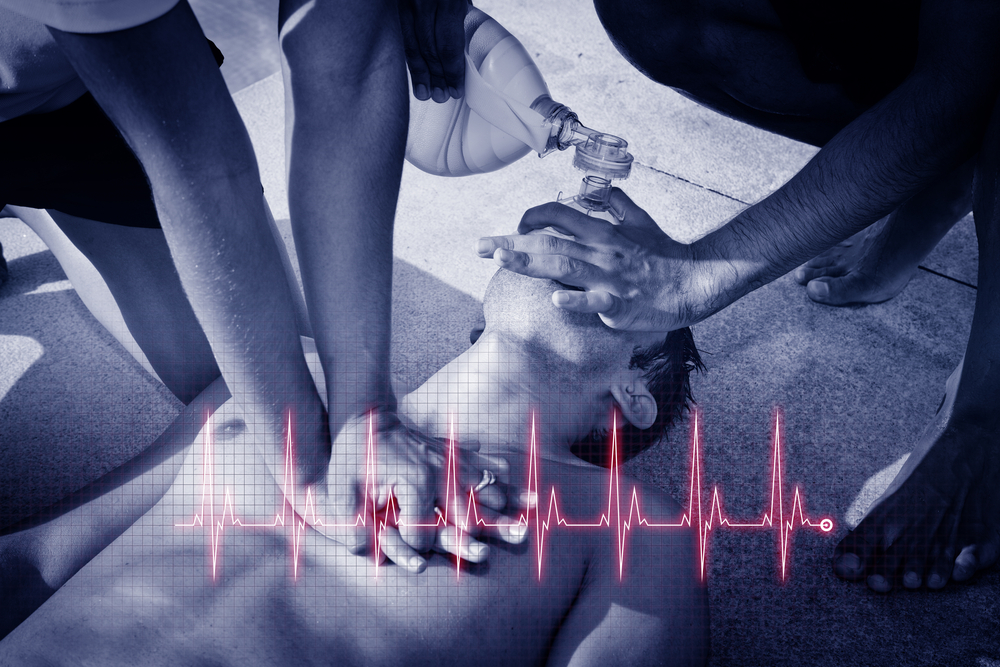Chest Compression during CPR: Do ventilation interruptions really affect outcome?

ARTICLE REVIEW
Cardiac arrest (CA) management has largely improved during the last decades. Several bundles of treatment have been introduced in clinical practice both during the cardiopulmonary resuscitation (CPR) phase and the post-resuscitative period. Unfortunately, only a few of them have been significantly correlated to improved survival and intact neurological outcome. Among them, high-quality chest compression with rapid defibrillation if appropriate along with target temperature management (TTM) after recovery of spontaneous circulation (ROSC) have contributed to improve survival in CA patients. Particularly, 2010 guidelines stressed the concept of uninterrupted chest compression, even in case of shockable rhythm, to increase the possibilities of achieving ROSC after shock administration [1]. Also, the increased number of laypersons able to perform high quality chest compressions has been linked to increased survival in patients suffering from out-of-hospital CA (OHCA), along with the widespread availability of automated external defibrillator (AED) in the field [2]. In line with such results, many experimental and clinical findings suggested that in OHCA, bystander CPR providing high-quality and uninterrupted chest compression without rescue ventilation might be as effective or even more effective than classic approach with interruptions every 30 compression to allow two rescue ventilations[3].
Based on these findings, Nichol et al. [4] designed a cluster-randomised trial to investigate the effect of continuous chest compressions (CCC) during CPR vs. standard CPR on survival at hospital discharge. CCC consisted of cycles of two minutes CPR without any stop for rescue ventilations, which were delivered asynchronously during CPR, with a rate of 10/minute. The control group received standard CPR with 30 chest compressions and 2 ventilations. After 6 minutes (3 cycles), advanced airway management was attempted in both groups. Patients were included if they underwent out-of-hospital, non-traumatic CA. Patients were excluded if they had an emergency medical system witnessed (EMS-witnessed) CA, an asphyxial cause of arrest, uncontrolled bleeding, known pregnancy, preexisting tracheostomy and an initial CPR performed by a nonparticipating EMS provider. 114 EMS agencies were grouped into 47 clusters that were assigned to intervention or control group twice per year.
From June 2011 to May 2015, 23,711 patients were included and randomised in the study, with 12,653 assigned to the intervention group and 11,058 to the control group. Baseline characteristics between the two groups were well balanced, except for small differences that were not considered to be clinically significant. 1,129/12,613 patients (9.0%) in the intervention group and 1,072/11,035 patients (9.7%) in the control group survived to hospital discharge (adjusted difference -0.7% 95%CI -1.5 to 0.1 P=0.07). Modified Rankin scale was chosen to assess neurological status at discharge, with a score ≤ 3 indicating favorable neurological outcome (FNO). 883/12,560 patients (7%) in the intervention group and 844/10,995 patients (7.7%) in the control group survived with FNO at hospital discharge (P=0.09). No other significant differences were reported in subgroup analysis, except for a significant shorter hospital-free survival days in intervention group than control group (mean difference, −0.2 days; 95% CI, −0.3 to −0.1; P = 0.004).
This is a large cluster-randomised trial, enrolling more than 20,000 patients in less than four years, investigating the effect on mortality of a widespread saving –life treatment: chest compression during CA. Study design was solid and randomisation was well performed, despite some imbalances occurred between interventions and control group. In addition, authors were able to record chest compression quality during CPR and to perform a per-protocol analysis based on CPR performance data. However, some aspects need to be discussed to not misinterpret trial results. First, the difference in treatment between groups relied on 4 minutes CPR after occurrence of CA. Indeed, in both groups 1 cycle of CCC was allowed (that is 2 minutes) and after the third cycle advanced airway management was attempted and in most case fulfilled with endotracheal intubation (> 50%). This meaning that a different treatment was really provided for only 4 minutes of CPR. Second, despite the difference in compression fraction (number of compressions/minute) was statistically significant between groups, it was likely to be clinically irrelevant (0.83±0.14 intervention group vs. 0.77±0.14 control group, P <0.001).
“…short CPR performed by well trained personnel with high-quality chest compressions (in terms of depth and rate), interrupted chest compressions for rescue ventilations (30:2) or uninterrupted chest compressions with asynchronous ventilations did not differ in terms of hospital survival.”
In light of these considerations, the takeaway message of this study could be summarised by saying that short CPR performed by well trained personnel with high-quality chest compressions (in terms of depth and rate), interrupted chest compressions for rescue ventilations (30:2) or uninterrupted chest compressions with asynchronous ventilations did not differ in terms of hospital survival.
This article review was prepared and submitted by ESICM Journal Review Club member Antonio Dell’Anna.
REFERENCES
1. Deakin CD, Nolan JP, Soar J, Sunde K, Koster RW, Smith GB, Perkins GD, (2010) European Resuscitation Council Guidelines for Resuscitation 2010 Section 4. Adult advanced life support. Resuscitation 81: 1305-1352
2. Chan PS, McNally B, Tang F, Kellermann A, Group CS, (2014) Recent trends in survival from out-of-hospital cardiac arrest in the United States. Circulation 130: 1876-1882
3. Bobrow BJ, Spaite DW, Berg RA, Stolz U, Sanders AB, Kern KB, Vadeboncoeur TF, Clark LL, Gallagher JV, Stapczynski JS, LoVecchio F, Mullins TJ, Humble WO, Ewy GA, (2010) Chest compression-only CPR by lay rescuers and survival from out-of-hospital cardiac arrest. JAMA : the journal of the American Medical Association 304: 1447-1454
4. Nichol G, Leroux B, Wang H, Callaway CW, Sopko G, Weisfeldt M, Stiell I, Morrison LJ, Aufderheide TP, Cheskes S, Christenson J, Kudenchuk P, Vaillancourt C, Rea TD, Idris AH, Colella R, Isaacs M, Straight R, Stephens S, Richardson J, Condle J, Schmicker RH, Egan D, May S, Ornato JP, Investigators ROC, (2015) Trial of Continuous or Interrupted Chest Compressions during CPR. The New England Journal of Medicine